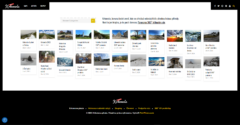
Features section
Add advertising hereStep-by-Step Guide to Registering Your Website with Search Engines
In today’s digital age, having an online presence is crucial for anyone wanting to reach a wider audience, whether you’re a business owner, a blogger, or an influencer. However, creating a website is just the first step. To ensure your website is found by your target audience, you must register it with search engines. This process can significantly enhance your site’s visibility and drive traffic. Below is a detailed guide on how to register your website with search engines, followed by an overview of the benefits of using WebsiteURL.org, a tool that can further amplify your online presence.
1. Determine the Main Search Engines
The first step is identifying the search engines where you want your website to be listed. Google and Bing are the most widely used search engines globally, so you should prioritize registering your website with them.
2. Register with Google Search Console
- Go to Google Search Console (search.google.com/search-console/about) and sign in with your Google account. If you don’t have one, you will need to create it.
- Once signed in, you can add your website by clicking on ‘Add Property’ and entering your website URL.
- You will then need to verify the ownership of your website. Google provides several methods, including uploading a file to your site, adding a meta tag, using your Google Analytics account, or your Google Tag Manager. Choose the one that suits you best and follow the instructions.
3. Submit Your Site to Bing Webmaster Tools
- Visit Bing Webmaster Tools (www.bing.com/toolbox/webmaster) and sign in or sign up.
- Similar to Google, you’ll add your site by clicking on ‘Add a Site’ and entering your website URL.
- Bing will also require verification of site ownership, which can be done through options like placing a meta tag, uploading a file, or proving domain ownership via DNS record.
4. Regularly Submit Updated Sitemaps
Both Google and Bing allow you to submit sitemaps, which help search engines better crawl your site and understand its structure. Whenever significant updates are made to your site, make sure to resubmit your sitemap through Google Search Console and Bing Webmaster Tools.
5. Monitor Your Site’s Performance
After your site has been registered, both platforms offer tools to monitor your site’s performance, including search traffic analytics, index coverage, and crawl errors. Regular monitoring can help you understand how visitors are finding your site and where you can make improvements.
Benefits of Using WebsiteURL.org
WebsiteURL.org is an additional tool that can complement your SEO efforts. Here are some of the benefits it offers:
- Increased Visibility: By listing your website on WebsiteURL.org, you’re creating another channel through which potential visitors can find your site. This increased visibility can lead to more traffic.
- SEO Improvement: Backlinks from directories like WebsiteURL.org can positively impact your website’s search engine ranking by signaling that your site is credible and relevant.
- User Engagement: The platform allows for the presentation of your website in a context that makes it easy for users to discover and engage with your content, potentially increasing dwell time and reducing bounce rates.
- Market Reach: Being part of a comprehensive directory can connect you with audiences that you might not reach through search engines alone.
In summary, registering your website with search engines is an essential step in optimizing your online presence. It ensures that your site is easily discoverable by those looking for the products, services, or content you offer. Furthermore, leveraging the benefits provided by WebsiteURL.org can enhance your SEO efforts and extend your reach to a broader audience. As the internet continues to evolve, staying proactive in these efforts is key to maintaining and growing your online visibility.





